

Annie
K-6 Librarian
BrainPOP Educators. DGT™ Resource Collection — Doing Good Together™
Digital Citizenship. Owen. K-12 School Libraries. Kids and Family Reading Report. In fall 2016, Scholastic, in conjunction with YouGov, conducted its biannual survey to explore family attitudes and behaviors around reading books for fun.
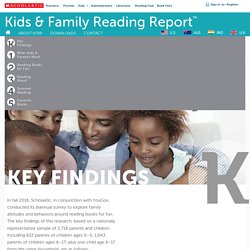
The key findings of this research, based on a nationally representative sample of 2,718 parents and children, including 632 parents of children ages 0–5; 1,043 parents of children ages 6–17; plus one child age 6–17 from the same household, are as follows: 1. What Kids & Parents Want in Children’s Books The average home with children ages 0–17 reports having 104 children’s books, however, there are large disparities in the number of books for kids in the home when considering kids’ reading frequency and household income: Children who are frequent readers have 141 children’s books in their homes vs. 65 books for kids among infrequent readers’ homes.
How can schools protect student data without training teachers in privacy basics? Gearing up for their district’s password-reset day in October, teachers and school administrators in Raytown, Missouri, watched a spoof video “gym” tour by their tech-support staff, who offered tips for stronger passwords amidst “laptop lunges” and “cross-tech” training.
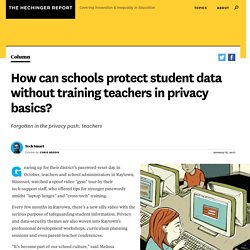
Every few months in Raytown, there’s a new silly video with the serious purpose of safeguarding student information. Privacy and data-security themes are also woven into Raytown’s professional development workshops, curriculum planning sessions and even parent-teacher conferences. “It’s become part of our school culture,” said Melissa Tebbenkamp, Raytown’s director of instructional technology.
“If our student data is hacked, it might just be a test score, but it could also be their social security number, or their disability information,” she said.
Self Reflection Reading Goals @JSerravallo - Teacher Tech. I saw this tweet about Jennifer Serravallo’s Reading Goals Self Reflection form from her book.
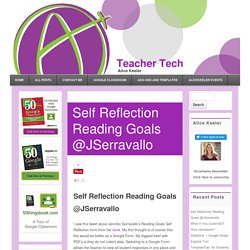
My first thought is of course that this would be better as a Google Form. My biggest beef with PDF’s is they do not collect data. Switching to a Google Form allows the teacher to view all student responses in one place and to view charts about the responses to make faster and better decisions. Library Media Tech Talk. Library Design.
Reset your brain: do a mind dump! You know the state — too many tabs open, too many notifications, too much noise.
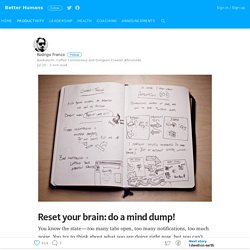
You try to think about what you are doing right now, but you can’t focus. Your mind is in the future, thinking about a bazillion things you need to finish, the email you are supposed to send by the beginning of the month. Browse This! Great Magazines for Kids and Teens. There are fewer things more exciting as a kid than getting a piece of mail.
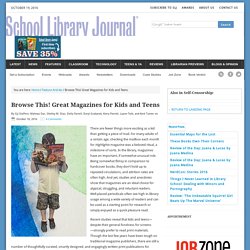
For many adults of a certain age, checking the mailbox each month for Highlights magazine was a beloved ritual, a milestone of sorts. In the library, magazines have an important, if somewhat unusual role. Being somewhat flimsy in comparison to hardcover books, they don’t hold up to repeated circulations, and attrition rates are often high. And yet, studies and anecdotes show that magazines are an ideal choice for atypical, struggling, and reluctant readers.
Capstone Anniversary Contest - About Us. How can we flip assessment to build a PBL culture? It’s been said a parent is a child’s first teacher.
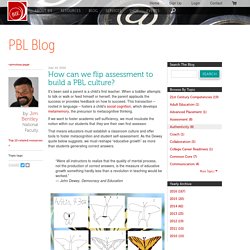
When a toddler attempts to talk or walk or feed himself or herself, the parent applauds the success or provides feedback on how to succeed. This transaction – rooted in language – fosters a child’s social cognition, which develops metamemory, the precursor to metacognitive thinking. Big History Project. What is a Performance Task? (Part 1) - Learning Personalized. Jay McTighe is an accomplished author, having co-authored 14 books, including the award-winning and best-selling Understanding by Design series with Grant Wiggins.
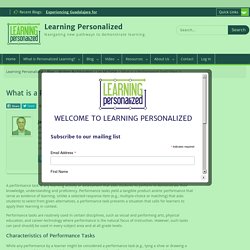
His books have been translated into ten languages. Jay has also written more than 35 articles and book chapters, and been published in leading journals, including Educational Leadership (ASCD) and Education Week. A performance task is any learning activity or assessment that asks students to perform to demonstrate their knowledge, understanding and proficiency. Performance tasks yield a tangible product and/or performance that serve as evidence of learning. Design Thinking for Libraries. A visual documentation of America in our time.
Social Studies Resources. Math Resources. Science Sites. Quandary. Images-of-change. Glacier National Park, in Montana’s portion of the Rocky Mountains, is expected to be virtually glacier-free by around 2030.
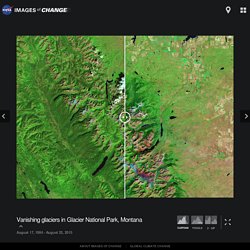
The roughly 150 glaciers it contained in 1850 dwindled to 83 by 1968 and to 25 today. The area shown here is the central portion of the park. Most of the blue bodies in these false-color images are permanent snow and ice. Glaciers in the Blackfoot-Jackson basin decreased from 21.6 square kilometers (8.3 square miles) in area in 1850 to just 7.4 square kilometers (2.9 square miles) in 1979.
The 2015 image also shows burn scars from wildfires. Images taken by the Thematic Mapper onboard Landsat 5 and the Operational Land Imager onboard Landsat 8. Download images: image 1 • image 2. Encyclopedia. Smithsonian Learning Lab. Perspectives for a Diverse America.
Kidcasts: Podcasts for kiddos. Last week I enjoyed the great variety of edCamp Global sessions across a variety of platforms–Periscope, Twitter chats, and Google+ Hangouts.
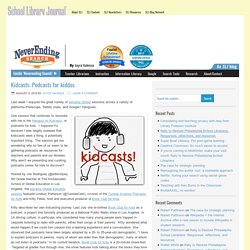
One session that continues to resonate with me is the Hangout on Kidcasts, or podcasts for kids. I suppose it’s because I was largely unaware that kidscasts were a thing, a potentially important thing. The session got me wondering why so few of us seem to be gathering podcasts as resources for teachers and parents and our libraries. Why aren’t we presenting and curating podcasts series for kids to discover? Hosted by Joe Rodriguez (@edtechjoe), 5th Grade teacher at The Ambassador School of Global Education in Los Angeles, the edcamp Global Kidcasts session featured Lindsey Patterson (@TumbleCast), co-host of the Tumble Science Podcasts for Kids and Kitty Felde, host and executive producer of Book Club for Kids. 29 Super Effective Ways to get Your Students' Attention Without Ever Raising Your Voice by PowToon! “Quiet Down!
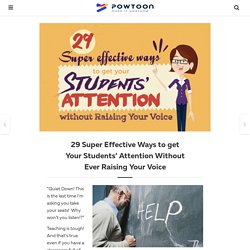
This is the last time I’m asking you take your seats! Why won’t you listen!?” Teaching is tough! And that’s true even if you have a classroom full of 38 obedient children, who listen to your every word. Learning Personalized - Navigating new pathways to demonstrate learning.
Parents – How to Help Your Child Love Reading Over the Summer. Online Research: Where to Start. The New York Public Library has a huge selection of online content to help with your research, whether it's finding a single article, tracing a family tree, writing a dissertation, or anything in between. Our go-to starting point for online research is our Articles & Databases page. By "databases," we really mean any website where you can access information, be it data, books, articles, sheet music, songs, videos, even guided tutorials. Many of these are purchased by NYPL, giving you access to rich, well-described material that you couldn't find just by searching through Google.
Primary Source Sets. Brain. 10 Online Resources to Improve EL Literacy. Many elementary school ESL teachers are now looking at materials for their 2016–2107 classroom. During a recent #ELLCHAT discussion, we shared ideas for choosing materials for ELs. How A School Library Increased Student Use By 1,000 Percent. Note Taking Skills for 21st Century Students. Note taking skills aren’t just automatic. We tell students “take notes” but they have no idea what that means. What makes “good notes.” What do they write down? How should notes look? Ever since I went through the Writing Across the Curriculum Course at my school I realized the tremendous gap between “writing” as we’ve taught it traditionally and 21st century writing skills.
Articulating an Impact on Student Learning. By Elizabeth Burns, Assistant Professor, School Library Program, Department of Teaching & Learning, Darden College of Education, Old Dominion University The Every Student Succeeds Act (ESSA), passed in December 2015, positions school librarians as Essential Personnel and provides potential dedicated funding to effective school libraries–IF we make them understand why school librarians matter.
ESSA falls short, however, of identifying what characterizes an effective school library program. This significant language allows school librarians to voice how their programs make an impact in their schools. As local decision makers (Local Education Agencies or LEAs in the actual law) and educational communities develop tools and evaluations to determine a school library’s effectiveness, there will be a greater need for each of us to communicate how our school library programs enhance student learning and achievement. Categories: Advocacy/Leadership, Blog Topics, Community, ESSA Updates. The Top 10 Reasons Students Cannot Cite or Rely On Wikipedia. 10. One headline per day, vowel and consonant free.
Listen Current - Home - Current Events and Featured Lesson Plans. Tournament Brackets - Printable Single & Double Elimination. Knowledge Quest. Visions of the Future. Imagination is our window into the future. At NASA/JPL we strive to be bold in advancing the edge of possibility so that someday, with the help of new generations of innovators and explorers, these visions of the future can become a reality.
As you look through these images of imaginative travel destinations, remember that you can be an architect of the future. Click on any of the thumbnails below to learn more and download a free poster sized image. › Learn more about the posters. Facts about Children’s Literacy. According to the National Center for Education Statistics (NCES), a divison of the U.S.
I’ve Got Research. Yes, I Do. I’ve Got Research. How About You? In 1847, Hungarian doctor, Ignaz Semmelweis made a remarkable discovery. When doctors washed their hands in a solution of chlorine and water, childbirth fever rates at Vienna General Hospital dropped from 18% to near zero. Offended that Semmelweis implied doctors were killing their own patients, the medical community rejected hand washing as an infection prevention measure, and drove Semmelweis out of medicine and into an insane asylum.
Learning Commons. British Museum - Google Cultural Institute. How Education, Literacy, and Technology Fit Together in My World. If It Were My Home. Library Budgeting. Water May Erase These Pacific Islands but Not the Culture. CryptoKids® America's Future Codemakers & Codebreakers. About school library leaders. 11 Free Websites to Practice English at Home.
RTlibrary on FlickrAt the New York Public Library's Adult Learning Centers, where adults work on basic English and literacy skills, we're often asked for recommendations of websites for adults to practice English at home. Below you'll find eleven sites, some with a focus on listening, some on vocabulary, others on grammar, and some with a range of activities. I-PICK Book Tasting. Before I get any farther with this post, I need to give credit where it’s due: thanks to Mr. Level the playing field. Veteran journalist and documentary filmmaker Soledad O’Brien tells how technology can help overcome barriers and close achievement gaps.
“Education is the next civil rights,” said Soledad O’Brien in her opening keynote address at ISTE 2015. Better World Ed. A meeting place for a world of reflective writers.
Creating a Classroom Library. Highland Park Central - home. No More “What Did You Do this Summer?”: 8 Questions We Should Ask Our Students as We Start the Year. ML: Macaulay Library. Resources for Assessment in Project-Based Learning. SLR_EnablersandInhibitors_V18.pdf. Home - IFC Assessments Organized by Skills - LibGuides at NYC DOE Office of Library Services. 5 Minute Librarian: 15 Viral Content Ideas for Your Library's FB Page! Teaching about Justice through Partnerships with Brown v. Board of Education NHS.
Better Evaluation. The Book - Teaching through Emotions. Sears List of Subject Headings - Frequently Asked Questions. The Brown-Bag Teacher: Finding Nonfiction Articles for Middle Grades. You Want Me to Work With Who? Tips to Collaborate with Any Teacher. Daring Greatly: Lessons from Cadillac. Theconversation.
Collection Development - Diverse Books. Danielson-teacher-rubric-2013-instructionally-focused.pdf. Let's Get Together Thursday - Librarians Reflect: How Did My Collaboration Go This Year? Media Mentorship in Libraries Serving Youth. Why-i-love-novelist-and-you-should-too. For Facebook? Pictures. Free OpenSource Dyslexia Font - OpenDyslexic. MCLA. How making expands students' visions of themselves SmartBlogs.
Statistics: Mary Meeker’s Annual “Internet Trends” Report Now Available Online. Digital vs. Print. Comprehension and Collaboration by Harvey Smokey Daniels and Stephanie Harvey. Celebrate Science: Behind the Books: Even More About Nonfiction Structure. Predicting/Making a Hypothesis. Project ENABLE- professional online development for teachers, librarians.